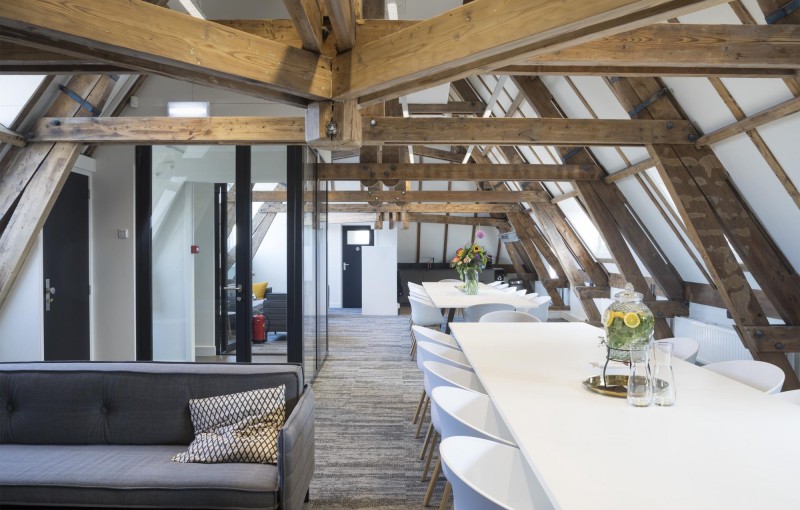
Smooth Moving: Ensuring a Seamless Employee Transition

Relocating employees can be a complex and challenging process, marked by logistical hurdles, emotional adjustments, and potential disruptions to productivity. However, with meticulous planning, effective communication, and the right support mechanisms in place, you can navigate the complexities of a move and ensure a seamless transition for your employees. In this comprehensive guide, we will explore key strategies and practical advice to facilitate a smooth and stress-free office relocation process, with a specific focus on supporting your employees. By prioritizing their well-being and job satisfaction throughout the move, you can foster a positive work environment and set the stage for long-term success.
Office Moving Checklist
When it comes to office relocation, the business side of the process requires careful planning and execution to ensure a smooth transition. One essential resource that can help in managing the various aspects of the move is a comprehensive business moving checklist. This checklist acts as a guide, providing step-by-step instructions and considerations for a successful office relocation. From coordinating logistics and notifying stakeholders to setting up utilities and ensuring the seamless transfer of services, a well-structured business moving checklist can significantly streamline the entire process. Check out this informative blog on office relocation to learn more about creating an effective office moving checklist.
Preparing for the Move (3-6 Months Before Move)
To make the moving process smoother for employees, provide them with clear and timely communication about the upcoming office relocation, especially if they are moving to a different country. Share important details such as the reasons behind the move, the timeline, and how it will impact their roles. Include a detailed breakdown of the relocation package, including covered expenses, reimbursement processes, and additional benefits, as part of the initial discussion during this stage. This helps employees make informed decisions about relocating with the company. Additionally, inform employees about any Visa requirements that may be necessary for their relocation and explain how the company will support them in the process. Encourage employees to ask questions and address any concerns they may have regarding Visa applications or other immigration-related matters. Establishing a moving committee can further ease their transition by providing dedicated guidance, resources, and support throughout the office relocation journey, including assistance with Visa applications if needed.
Recommended tool: Project management software like Trello or Asana can help streamline communication and tasks related to the move.
Relocation Assistance (2-3 Months Before Move)
Offering comprehensive relocation assistance is key to reducing stress and ensuring a smooth employee transition. Timely reimbursement for expenses will alleviate financial burdens and demonstrate your commitment to supporting employees during this period. Partnering with reputable relocation service providers can simplify logistics by handling tasks such as packing, shipping, and finding temporary housing, allowing employees to focus on their work and settle into their new environment smoothly. Additionally, providing a relocation orientation program with essential information about the new location, including housing options, schools, healthcare facilities, transportation, and recreational activities, can help employees feel more prepared and confident about their move. Ongoing support during the transition period, such as access to a dedicated relocation coordinator or mentor, can address any challenges or questions that may arise, ensuring a positive relocation experience for your employees.
Recommended tool: Relocation management software like UrbanBound or ReloTracker can help streamline and automate the relocation process.
Facilitating the Transition (1-2 Months Before Move)
To ease the transition for employees, provide them with comprehensive resources and support. Create a detailed information package about the new location, including housing options, schools, healthcare facilities, and local amenities. Consider organizing orientation sessions or virtual tours to familiarize employees with their new surroundings. Offer assistance in finding suitable housing options by connecting them with reliable real estate agents or rental platforms. Supporting spousal job searches, school admissions, and community integration will further enhance their settling-in process and reduce stress.
Recommended tool: Employee relocation software like MOVE Guides or Plus Relocation can provide a centralized platform for employees to access resources and support during the transition.
Handling Office Relocation Delays
Handling office relocation delays effectively involves clear communication with employees, maintaining transparency about the process and any changes, providing regular updates, and managing expectations. It's crucial to show flexibility, empathy, and support to employees facing delays, offering temporary accommodations, covering additional expenses, and providing transportation options if necessary. Assisting with temporary arrangements, such as arranging short-term rentals or hotels, and staying in regular contact to help address challenges and manage logistical issues is important. If significant delays occur, adjusting relocation packages to alleviate financial or logistical burdens can be considered. Providing access to employee assistance programs or counseling services can support employees' mental well-being during the office relocation process. Ultimately, by demonstrating understanding and proactive support, companies can help employees navigate office relocation delays with minimal impact on their overall experience.
Emotional Support (Throughout the Relocation Process)
Relocation often brings about emotional challenges for employees, so providing adequate support is crucial. Offering a few extra days off specifically dedicated to the move allows employees to focus on the logistics of relocation stress-free, without having to exhaust their regular vacation days or personal time off. Alongside offering extra time off for the move, companies should prioritize emotional well-being by providing access to counseling services or employee assistance programs. Encouraging open communication and creating forums for employees to share their concerns and strategies for coping with relocation is essential. Establishing mentorship programs or buddy systems, where experienced employees offer guidance and support, can also be beneficial. By combining additional time off with emotional support initiatives, companies demonstrate their commitment to the well-being of their employees throughout the relocation process.
Recommended tool: Employee well-being platforms like Talkspace or Modern Health can offer virtual counseling and mental health support for employees during the relocation process.
Post-Move Follow-Up (After the Move)
After the move, conduct regular check-in meetings with relocated employees to assess their well-being and address any lingering concerns. Use these meetings as an opportunity to gather feedback and identify areas for improvement in the relocation process. Organize integration activities, team-building events, or social gatherings to help employees forge connections and feel more connected to their new colleagues and workplace. By fostering a sense of belonging, you can create a supportive environment that promotes job satisfaction and reduces the stress associated with the relocation.
Recommended tool: Employee engagement platforms like TINYpulse or Officevibe can facilitate ongoing feedback and team-building activities to support post-move integration.
Conclusion
By implementing these carefully curated strategies and guidelines, you can lay the foundation for a smooth and less stressful moving process for your employees. Remember that open communication, comprehensive resources, and unwavering support are essential elements in ensuring a successful transition. As you prioritize their well-being throughout the relocation journey, you not only minimize the stress associated with the move but also boost employee satisfaction, enhance productivity, and contribute to the long-term success of your organization. Empowering your employees during this transformative period is an investment that yields valuable returns—a committed and engaged workforce ready to thrive in their new environment. Embrace these insights, adapt them to your unique circumstances, and witness firsthand the positive impact of a smooth and employee-centric moving experience.
Questions that may arise within employees:
Office Relocation within the Same City
- What is the reason for the office relocation within the same city, and how will it impact our daily work routines?
- If the new office is further for some employees, is a work from home option available? Or hybrid?
- Will the new office space offer better amenities or facilities compared to the current location?
- What is the timeline for the office relocation, and how will it be communicated to employees?
- What measures will be taken to ensure a smooth transition of equipment, furniture, and technology to the new office?
- Will there be any changes to the commute or transportation options for employees, and if so, what alternatives will be provided?
Relocation to a Different City
- What are the reasons for the relocation to a different city, and how will it impact our roles and responsibilities?
- How will the company support employees in finding suitable housing options in the new city?
- What relocation assistance will be provided to help with the logistics of moving to a different city, such as packing, shipping, and temporary accommodation?
- What resources or support will be available to help employees and their families adjust to the new city, including information on schools, healthcare facilities, and local amenities?
- Will there be any provisions or assistance in addressing potential challenges like spousal job searches, school admissions, or community integration in the new city?


